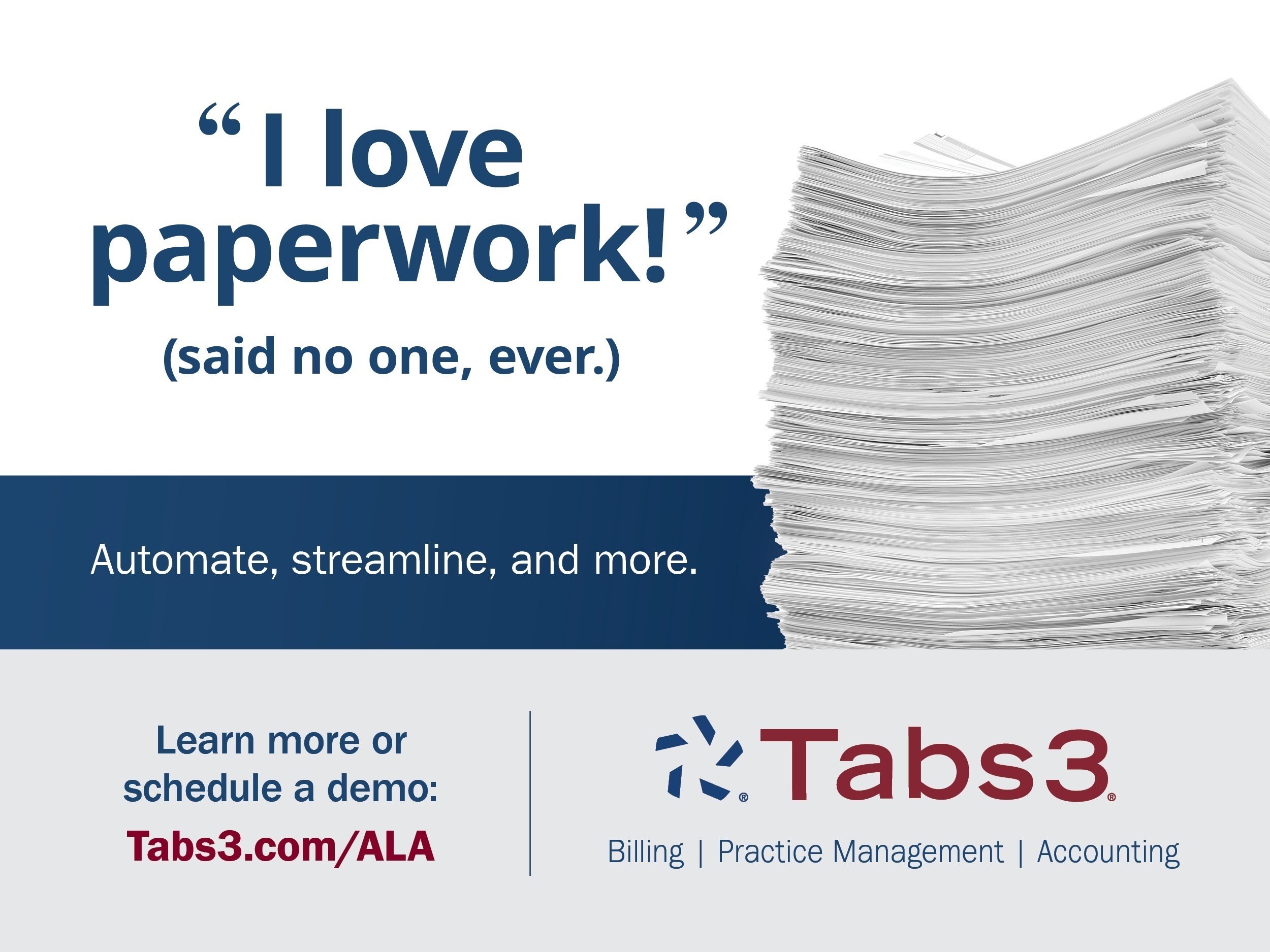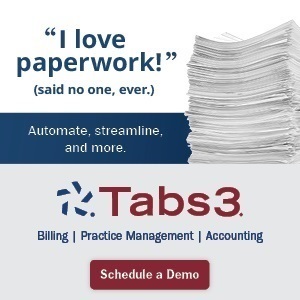To minimize any related downtime, firms and in-house entities must be able to quickly locate a qualified replacement. Utilizing a passive recruiting approach to find candidates long before there’s a need to hire them can help.
Numerous industry members recruit on an ongoing basis, continuously unearthing future candidates — including Farrell Fritz, comprised of approximately 70 attorneys. Managing Partner Bob Creighton says relationships with recruiting firms, clients and other entities can help yield hiring options.
“The best way to try to identify candidates is to have an integrated, multipronged effort to stay in touch with as many people as you can — and keep the word out about your firm’s desire to grow and the opportunity your firm offers candidates,” says Creighton. “So when they’re thinking of changing jobs, your firm is front of mind.”
If your organization has historically relied on launching candidate searches solely when a hiring need arises, the following practices can help you more proactively prepare to fill critical roles.
1. STRENGTHEN YOUR EMPLOYER BRAND
In addition to soliciting resumes through a career page on their website — regardless of whether there’s an opening — a number of employers are encouraging their recruiting and marketing professionals to work together. The goal is to find ways to convey the organization’s employee experience, according to Valerie Fontaine, a Partner at legal search firm SeltzerFontaine.
“Firms are paying a lot more attention to brand building,” Fontaine says. “The recruiting professionals within the firms need to encourage their marketing people to be thinking about messaging that promotes recruiting, as well as client and business development.”
Social media posts can extend beyond just job listings. For instance, Fontaine says sharing information about attorneys’ pro bono achievements on venues like LinkedIn and Instagram can potentially help raise a firm’s public profile.
“Talk about some of the successes the firm has had or new areas of law it’s getting into,” she says. “Make sure you are highlighting the achievements of your diverse attorneys so you appear welcoming to all kinds of folks out there. If you hire somebody, make a big deal in the press about it. Potential candidates need to know you are a firm that’s on the move and growing.”
The marketing department at Creighton’s firm regularly posts items on LinkedIn and other social media outlets, ranging from substantive information about published articles to notifications of events firm members are scheduled to speak at.
“All of that is designed to just keep the firm’s name and brand in front of others, so if people are looking at Farrell Fritz, they’ll be able to see all of that information on a relatively current basis,” Creighton says. “It creates some degree of buzz in the community when the firm is hiring. We hope that may make people more inclined to inquire about opportunities here; that definitely does happen.”
“Firms are paying a lot more attention to brand building,” Fontaine says. “The recruiting professionals within the firms need to encourage their marketing people to be thinking about messaging that promotes recruiting, as well as client and business development.”
Donaldson and Weston’s HR Manager, Heather LoGalbo — who Partner Dante Weston says has more than a decade of experience in the human resources field — catalogs information about candidates the firm encounters. The HR Manager tags elements such as whether a person might be someone to consider for future roles.
“One of the benefits of having an HR manager is possibly you meet someone today that you want to hire six months from now — making sure you keep track of that,” Weston says. “Both on the administrative side as well as the recruiting side, it’s hugely helpful. Instead of me perusing the internet, trying to look for the right sites to post on, she knows there are sites available where she can post one ad, and it’ll go to 10 or 20 locations. It’s really helped us create a digital presence.”
2. INCENTIVIZE EMPLOYEES TO HELP
Attorneys and support staff members can help increase the exposure of a social media post from the organization, too.
“They certainly should at least like it; possibly reshare it; [or] make a comment — like, ‘Welcome, we’re so happy to have such and such here;’ ‘This was a really exciting win;’ or ‘I’m so proud of my firm to be part of doing this good thing in the community,’” Fontaine says.
Employees can also take a more direct role in passive recruiting by suggesting possible current or future employment candidates. It’s a type of input employers may want to encourage.
“When [employees] make a referral, the likelihood it’s going to be somebody who will be attractive to the [organization] and successful are higher than just somebody coming in cold,” Fontaine says.
Donaldson and Weston sponsors an ongoing incentive plan to obtain referrals from within the firm. Current employees receive a bonus if their recommendation is eventually hired and are paid another bonus when the new hire completes 90 and 180 days with the firm.
“It’s one thing to a hit a number — we need five people, so let’s get these five,” Weston says. “But it’s another thing to balance that out with making sure they’re good fits and quality candidates. We pay [the employee] a retention bonus to not only try to find someone who will maybe apply for or take the job, but also to work with [the new hire] to make sure they onboard as efficiently as possible.”
“Firms are really looking at pipeline opportunities where they are working with colleges or even high schools and providing programs for people who think they might want to join the legal profession.”
Attorneys, paralegals and other staff members have submitted hiring suggestions — former coworkers, people they knew in law school — who Weston says have largely been good hires.
“They’re taking more of a role in recruiting,” he says. “They’re out, they’re about, they know colleagues at other firms. We have probably a dozen people that have come through the referral process currently. What we’ve found is candidates hired through the referral program end up getting promoted quicker to higher positions than those that come in without knowing anyone.”
3. INTERACT WITH FORMER EMPLOYEES
Creighton says the alumni network Farrell Fritz has sponsored for more than a decade has helped the firm remain in contact with former employees. They have a dedicated portal on their website and host social events that current employees also attend.
“We think it’s a smart thing to do for a lot of reasons,” he says. “Those lawyers are all now working in other law firms or businesses, and they could refer work to us. They could be good resources from a recruiting perspective, because if they come across people looking to work in Long Island or in New York, they can refer those people to us; that’s happened quite a bit.”
Keeping former employees updated about what the firm or legal department is up to and inviting them to participate in webinars and other events can result in positive feelings that alumni may pass on to others in the industry, Fontaine says.
“The reason you want to have alumni groups is multifold,” she says. “One, just to let potential candidates know this is a community-friendly, caring place; we wish you the best, regardless of where your career takes you — and it’s brand building. Another way of [passively] recruiting always has been word-of-mouth [information sharing]; you want that word-of-mouth to be regular and positive.”
Fontaine has also noticed an increase in boomerang hiring, where, after leaving a job, employees work for their previous employer a second time — which offers clear advantages.
“We stay in touch on a regular basis with the recruiting firms we work with. They know to generally present candidates because when the right people come along — whether or not we were actively looking to recruit in that space — we’ll be pretty opportunistic at trying to hire [them].”
“People are returning,” she says. “Your alumni know the folks — the culture, the ins, the outs and what works and doesn’t at your firm. Be nice to them on the way out, and when they’re leaving, let them know you’d be happy to hear from them in the future, if they might entertain returning. Sometimes firms lose people they don’t want to lose. You want to make it easy for them to come back.”
4. DEVELOP A TALENT PIPELINE
Pinpointing anticipated future hiring needs — and actively helping to prepare a pool of candidates to meet them — can also shorten hiring time. A number of industry members, according to Fontaine, have undertaken outreach efforts to help encourage and develop future industry members through workshops, career fairs and mentoring programs.
“Firms are really looking at pipeline opportunities where they are working with colleges or even high schools and providing programs for people who think they might want to join the legal profession,” Fontaine says. “There’s been a lot of concentration of those kinds of efforts for [diversity, equity and inclusion] purposes, as well.”
Farrell Fritz supports some local law schools through scholarship funds, Creighton says, which has provided opportunities to engage with the institutions and students. The firm also has uncovered solid candidate options through correspondence it receives from recruiters.
“Our two go-to firms have worked with us for a long time, so they do a good job screening and present really good candidates to us, both at the associate and partner levels,” he says. “When you’re getting unsolicited email blasts, more often than not they’re candidates we pass on, but occasionally, we find some we’re interested in talking to.”
Professional organization initiatives — such as community bar programs — can be a source of new talent, Fontaine says. Farrell Fritz firm members are encouraged to be involved in their community, according to Creighton. In fact, he says the majority of its lawyers are part of a bar or civic association or philanthropic organization.
“The not-for-profit community is really vibrant on Long Island,” Creighton says. “We are engaging it, really, because it’s consistent with our core values, but those relationships have far-reaching effects. Often, we get opportunities to talk to people who are looking for jobs because they’ll talk to a friend who knows somebody at Farrell Fritz. That will lead to opportunity for us.”
No law firm or department can flawlessly foretell the future. Even with the most arduous planning, some may find they’re unprepared to fill key positions. One potential solution is to shift the organization’s talent supply ahead of its present demand — a successful approach Farrell Fritz has employed.
“We stay in touch on a regular basis with the recruiting firms we work with,” Creighton says. “They know to generally present candidates because when the right people come along — whether or not we were actively looking to recruit in that space — we’ll be pretty opportunistic at trying to hire [them]. Taking the view that if you build it, they will come: If we hire good lawyers, we’ll get the work. We’ll be able to support that. We really try not to miss opportunities to hire the right candidates.”


